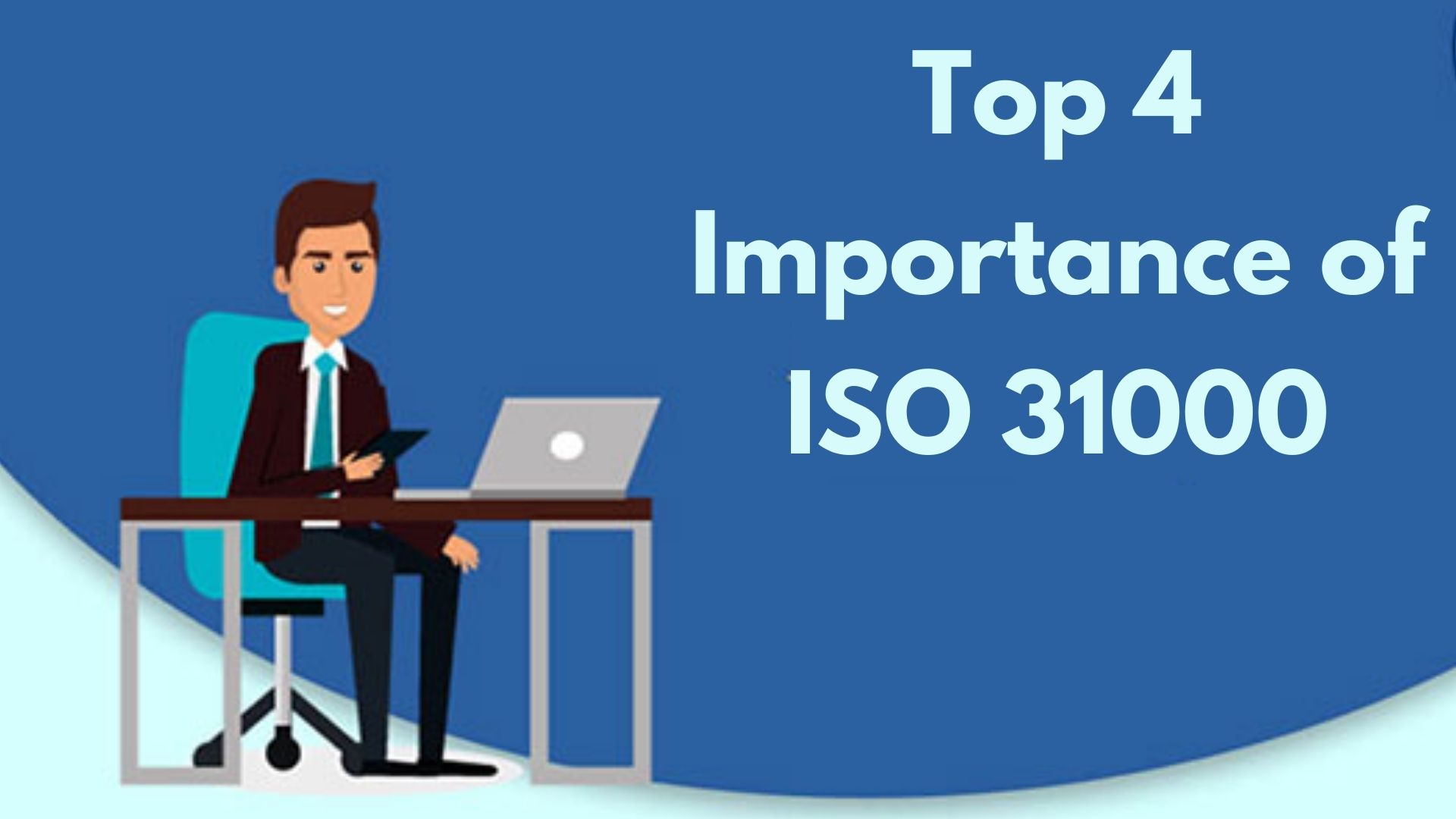Whether you are a risk professional or just risk-averse, ISO
31000 is a great resource, which is now accepted all over the world. It is
happily concise and transparent by providing a flexible way to implement risk management
of common knowledge. In this article we have discussed about Top 4 importance
of ISO 31000.
There are different types of 4 importance of ISO 31000 certification.
- ISO 31000 has an available configuration, including:
- ISO 31000 supports risk-taking throughout the business:
- ISO 31000 is easily compatible with your business:
- ISO 31000 is easy to implement:
Now We will know types of 4 importance of ISO 31000 certification in details.
1- ISO 31000 has an available configuration,
including:
- Simple word definition with
separate ISO 31000 Guide 73 Reference Documents to separate additional dictionaries.
A policy department describes the purpose and characteristics of risk
management in an organization. Focusing on risk management as a tool for value
creation and protection, customization is needed to identify the impact of
human and cultural values ??and to fit your business. It presents risk
management as an integrated, structured, inclusive and dynamic discipline using
the best possible information.
- It has a strong connection to the
core leadership and commitment to the governance and decision-making of the
framework. As expected from a qualitative standard, it focuses on integrating,
designing, implementing, evaluating and improving risk management in the
organization.
- Dangerous processes with familiar
central columns of topics, assessments, and medical elements surrounded by
communication, monitoring and reporting activities.
The guidelines include "Why" (policy),
"How" (framework) and "What" (process) of risk management.
2- ISO 31000 certification supports risk-taking throughout the business:
- The International Standards
Organization describes ISO 31000 as “including all applications and all types
of risks for all organizations, regardless of type, size, activity, and
location. It has been developed by various stakeholders and is intended for the
use of not only professional risk managers but also risk managers. ”
- It aligns the business with the
mechanics process steps of risk and the business of increasing the level of
essential strategies and objectives.
- This is a non-partisan, approach
to risk management - these are included in the most useful IEC / ISO 31010
standards. Experiences can be learned using IEC / ISO 31010, and teachers can
debate the pros and cons of various risk assessment methods without
complicating the original “why”, “how”, “what” message of ISO 31000.
In a rapidly changing world, the guide points to an
integrated view of danger, providing a platform for informed decision-making.
3- ISO 31000 is easily compatible with your business:
Like other ISO standards, ISO 31000 provides
guidance rather than being a certificate platform. Since every business has a
different purpose, structure, and competitive position, it cannot be the size
that fits all approaches to risk. ISO 31000 provides a single standard that can
be applied to all parts of your business, regardless of industry, type, or
location.
In short, the standard is not light Its
value applies to any part of the business, whether small or large Projects,
programs, business units, departments and operations can apply ISO 31000 in
their own way as per the overall business requirements for risk management.
Each organization has a unique risk profile,
which makes the flexibility of ISO 31000 certification an important reason for its widespread
adoption around the world.
4- ISO 31000 is easy to implement:
As a leading risk software provider, we can
understand how important it is that our risk management and analysis software
forecast. Adopts the principles, frameworks, and process steps of the ISO Certification standard. Prophesy! It is distributed in a seamlessly integrated work
environment that focuses on speed, simplicity and a good user experience that
encourages participation.
Prophecy! The
ISO 31000 standard facilitates the approach:
- Providing an integrated toolset
that works across the organization and distribute all ISO 31000 process steps
from topics, assessments and analysis through treatment and integrated
reporting.
- Enable communication,
consultation, monitoring and review by supporting rapid decision-making.
- Removing Many Barriers to Successful
Risk Management Implementation: Its use at its core is easily designed.
- Help break down the silos between
different parts of your organization and connect risk with their organizational
goals and objectives.
- Along with its flexible structure
to meet the needs of various user roles, programs, words and processes.
- Bringing important information to
the attention of program leaders, business executives and executives through
detailed reporting capabilities.
- Enabling consumers to keep an eye
on whether treatment plans are going to reduce goal gains and risk effects.
- Encourage risk and action owners
to update and update their specific tasks so that decision-makers have a clear
picture of your risk profile.
- To provide a dynamic view of the
risk to enable a review of the strategy as needed, and before it is too late to
make effective changes.
- It is easier to update the
information to improve risk-taking, productivity and productivity for risk and
action owners.
- Provides continuous integrated
analysis of dynamic results: Monte Carlo and what-if value and schedule
analysis, scene analysis, bow-tie, performance control, checklist, sensitivity
analysis, results-probability-matrix.
Risk decisions are predicted! To fully support the
organizations applying all components of ISO 31000 standards Leading great
results for your business.

